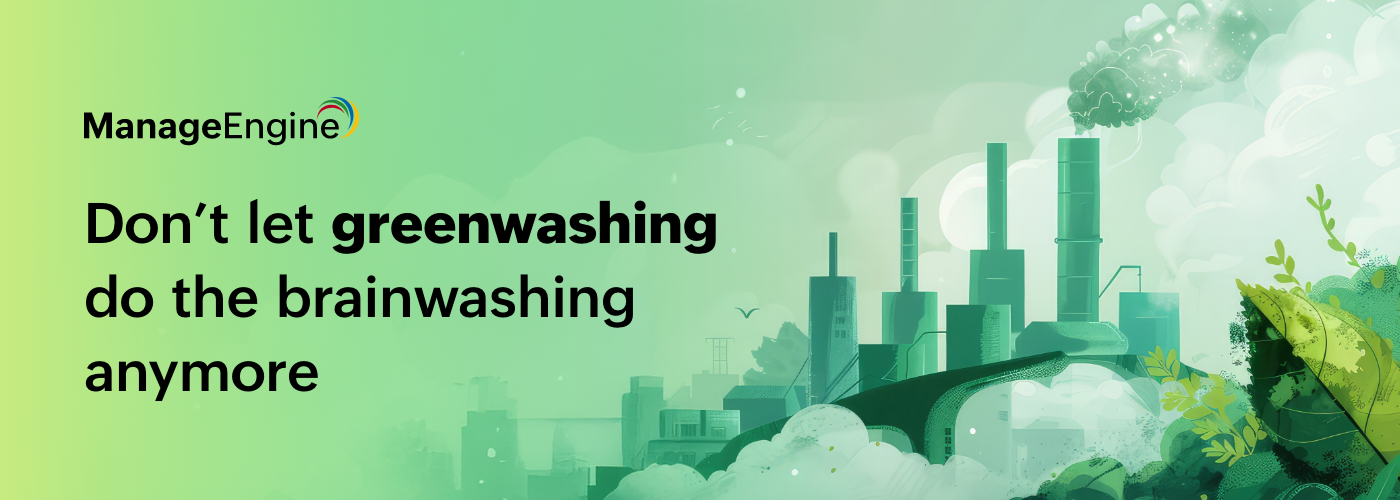Five worthy reads is a regular column on five noteworthy items we’ve discovered while researching trending and timeless topics. This week, we are exploring greenwashing, the stunts performed by market players, how they have exploited consumers, and the ways to prevent them for a sustainable future.

All that is green is not gold. Savvy?
Organizations are playing with labels such as green, natural, eco-friendly, and sustainable for their products or brands, and many more are sprawling in the market with no proper evidence to back them up. This often victimizes well-meaning consumers, and most businesses use it to their advantage. Greenwashing is one such adulterated effort to divert consumers’ attention and trap them into believing that a business is truly sustainable, when in reality it is not.
Marketing gimmicks carefully pull off the sustainability edge—even when there are no proper claims to back such assertions. This misleads consumers and also does not contribute to a clean environment.
For example, many consumers are making conscious choices in response to climate change, which is moving consumers towards sustainable offerings and practices with a sense of increasing alarm. Some investors, on the other hand, are interested in investing in companies that have lower carbon footprints (even if it is only through carbon offsets). This combination of consumer and investor factors drive business motives towards a climate-conscious path, with considerations for long-term sustainability and maintaining a positive brand image in the market.
However, real impact exists only where there is real sustainability—when companies are driven to invest in change and not just gain profits. Let’s break the links and understand the concept of greenwashing, the nuances that might demand attention, and steps to take towards the change.
1.Greenwashing: 18 recent stand-out examples
Innovations are really cool. But what’s not cool is the impact innovation can often leave in the long run. For instance, a package containing a commodity could have an unrecyclable plastic wrap but with a recyclable label pinned on top of it. This is a cynical move to convince the consumer that the product is sustainable. However, the messaging regarding what is recyclable and what is not is often unclear. Believe me, we were all deceived at one point. Let there not be another time; run your eye over this article, which has some noteworthy examples of greenwashing—beyond just recycling scandals.
2.How to spot and avoid greenwashing
Unlocking milestones concerning environmental goals could be challenging. If precise statements are overtaken by plain claims, decision-makers will remain clouded on sustainability. Sustainability frameworks and standards offer metrics to guide organizations in measuring their ESG performance. These reports are key indicators of businesses’ strategic decisions in the future and also help build reputation and trust. Such reporting also points out the existing gaps and opportunities to drive conscious choices.
3.Why Greenwashing is Becoming Top of Mind for Many Companies
There are two sides to this whole sustainability becoming the superstar thing. Where a handful of people make a genuine effort to add value to the environment, the growing mandates on maintaining sustainability have also pressured businesses to forge into unwelcoming practices. Labelling has become everybody’s thing now. Regulators, frameworks, and watchdog groups are actively looking to end greenwashing efforts across industries. To back this with proof, here is another article discussing how to take action to avoid greenwashing.
4.Greenwashing Tech: The Illusion of sustainable Innovation
From ChatGPT utilizing copious energy and water for every conversation to brands using vague words like “sustainable” or “eco-friendly” in their commercials, the greenwashing reign is on the rise. The dramatic growth in tech advancements significantly contributes to the overuse of energy sources to keep the data centers running. Relying on renewable energy integration could lower carbon footprints and meet sustainability goals for a green future. Greenwashing stunts in tech are neatly explained in the above-linked article, which explains how essential green innovation is in such a fast-paced world.
5.The Importance of Sustainability in Your Business
Lower energy consumption means higher cost savings. Consumers often place emphasis on how durable a product is and how promising its reuse capabilities are. Sources cite that to achieve the 1.5 °C target to cool down the adverse effects of climate change, greenhouse gas emissions need to become net zero by the year 2050. Sustainability, when viewed from a strategic perspective, benefits the business and the consumers rather than just playing around with words to persuade consumers or to mimic that they are socially, environmentally, and economically responsible. To truly understand the benefits of sustainable practices, dive into this article and quicken implementations.
Humanity will continue to live on this planet for many more years to come, and as human beings, we are equally responsible for fostering environmentally safe practices. With all the AI trends and other innovations happening, considerable awareness in all activities is crucial to flagging unethical practices like greenwashing in real life. To conclude, let’s stop the green-washers from brainwashing common folk.